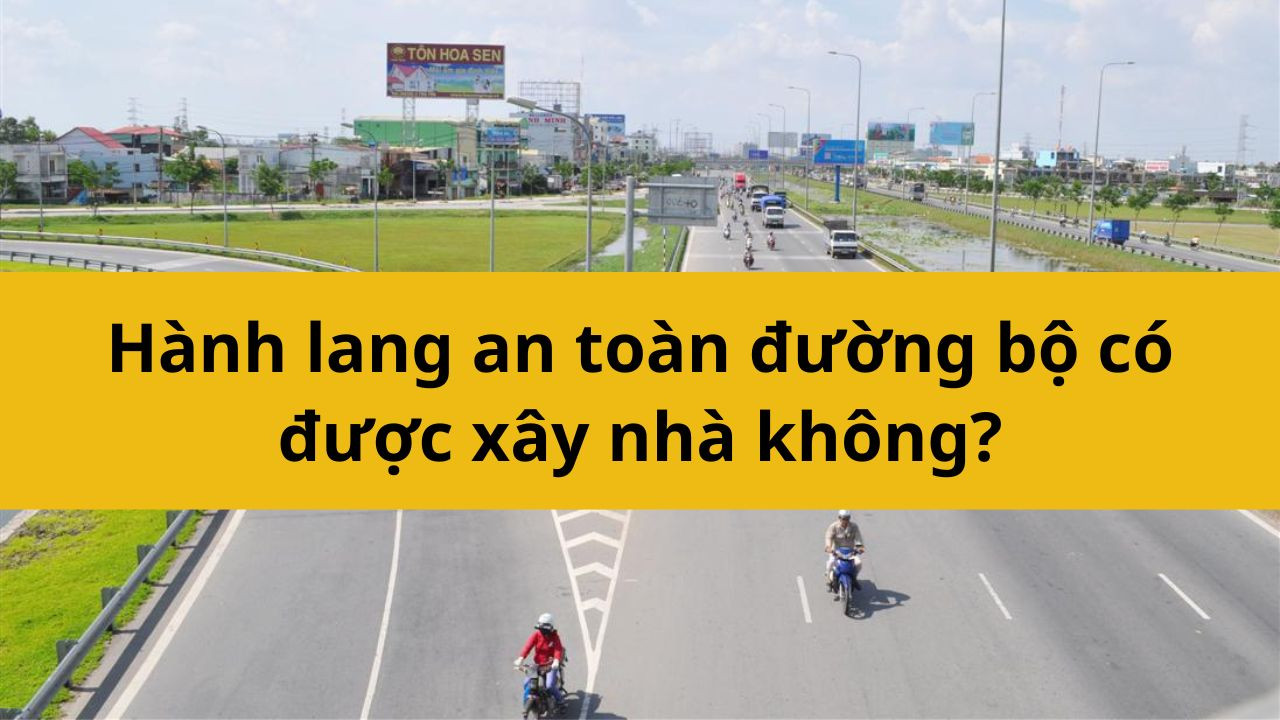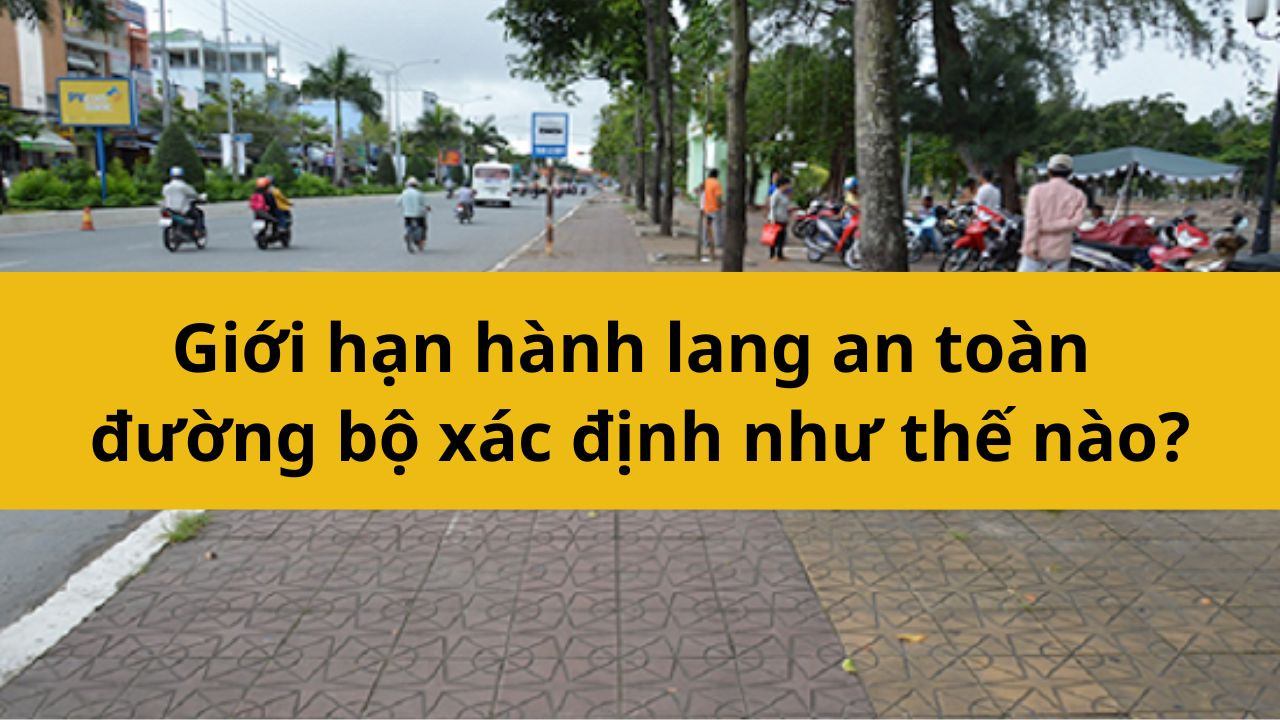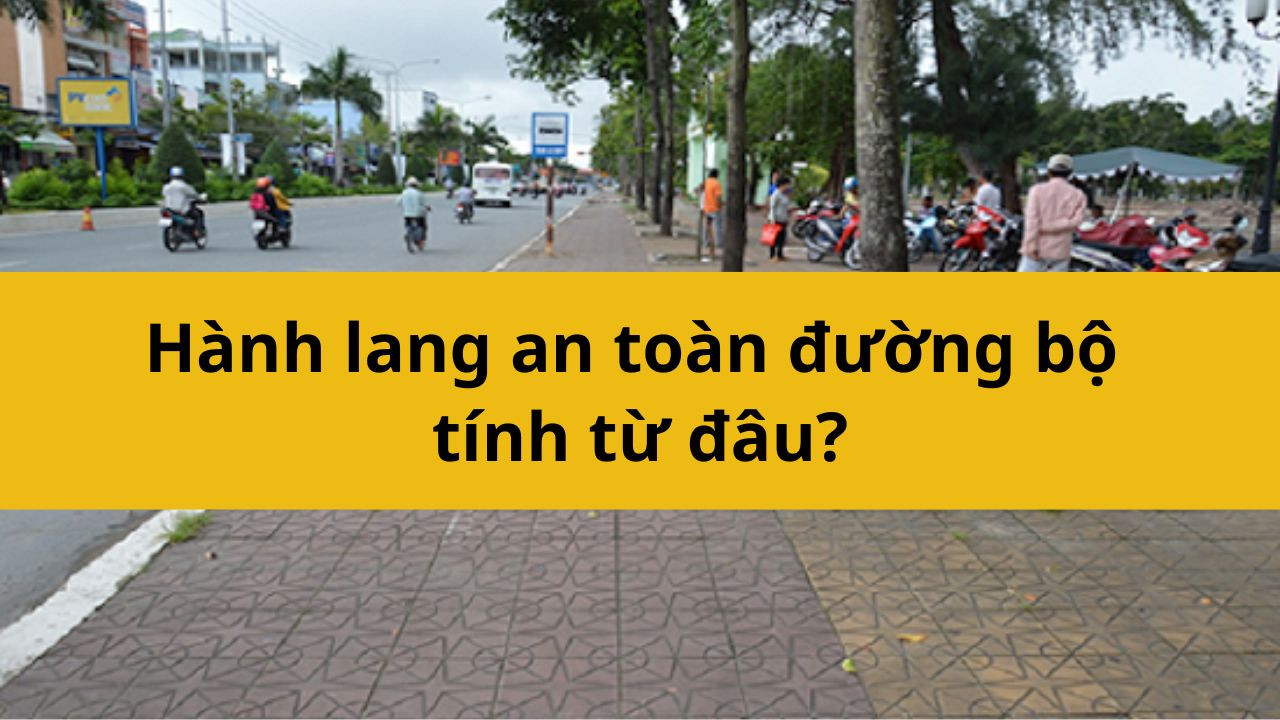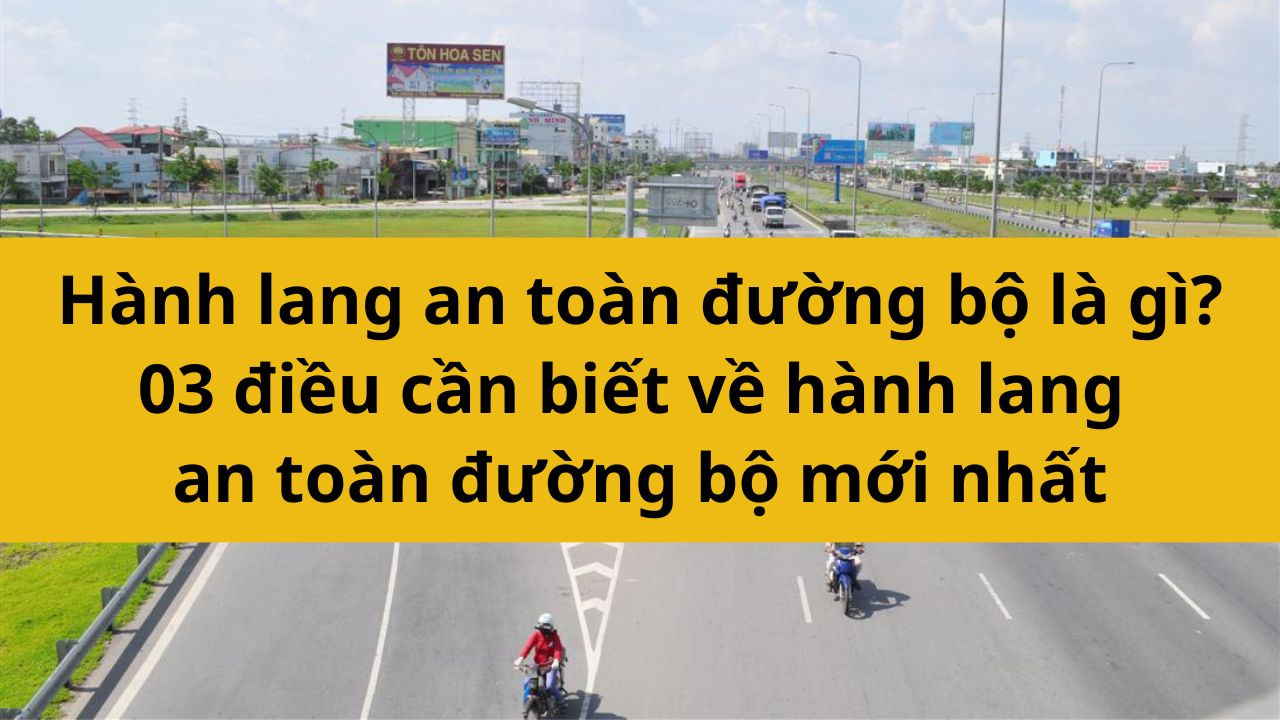 Tìm kiếm
Tìm kiếm
Chương 4 Nghị định 11/2010/NĐ-CP: Thẩm đinh an toàn giao thông
| Số hiệu: | 11/2010/NĐ-CP | Loại văn bản: | Nghị định |
| Nơi ban hành: | Chính phủ | Người ký: | Nguyễn Tấn Dũng |
| Ngày ban hành: | 24/02/2010 | Ngày hiệu lực: | 15/04/2010 |
| Ngày công báo: | 01/03/2010 | Số công báo: | Từ số 109 đến số 110 |
| Lĩnh vực: | Giao thông - Vận tải | Tình trạng: | Còn hiệu lực |
TÓM TẮT VĂN BẢN
Văn bản tiếng việt
Văn bản tiếng anh
1. Thẩm quyền quyết định và tổ chức thực hiện thẩm định an toàn giao thông
a) Đối với công trình đường bộ xây dựng mới, nâng cấp, cải tạo
Người có thẩm quyền quyết định đầu tư quyết định dự án phải thẩm định an toàn giao thông. Chủ đầu tư quyết định lựa chọn giai đoạn của dự án phải thẩm định an toàn giao thông; tổ chức thực hiện thẩm định an toàn giao thông. Đối với dự án thực hiện theo hình thức BOT (Hợp đồng Xây dựng - Kinh doanh - Chuyển giao), BT (Hợp đồng Xây dựng - Chuyển giao), BTO (Hợp đồng Xây dựng - Chuyển giao - Kinh doanh) thẩm quyền quyết định thẩm định an toàn giao thông theo quy định tại điểm b khoản này.
b) Đối với công trình đường bộ đang khai thác
Bộ Giao thông vận tải quyết định và tổ chức thực hiện thẩm định an toàn giao thông đối với quốc lộ, đường cao tốc;
Ủy ban nhân dân cấp tỉnh quyết định và tổ chức thực hiện thẩm định an toàn giao thông đối với đường đô thị, đường tỉnh, đường huyện.
2. Việc thẩm định an toàn giao thông của cơ quan có thẩm quyền quy định tại khoản 1 Điều này được thực hiện trên cơ sở Báo cáo thẩm tra an toàn giao thông của tổ chức tư vấn thẩm tra an toàn giao thông.
3. Tổ chức, cá nhân thực hiện dự án không bằng vốn nhà nước hoặc có đường chuyên dùng phải tổ chức thực hiện thẩm định an toàn giao thông theo quy định của Nghị định này. Báo cáo thẩm định an toàn giao thông phải được cơ quan nhà nước có thẩm quyền nêu tại khoản 1 Điều này chấp thuận.
4. Việc thẩm tra an toàn giao thông do một tổ chức có đủ năng lực theo quy định tại Điều 12 Nghị định này thực hiện; tổ chức thẩm tra an toàn giao thông hoạt động độc lập với tổ chức tư vấn thiết kế đã lập hồ sơ dự án, thiết kế công trình.
5. Tổ chức thực hiện thẩm tra an toàn giao thông có trách nhiệm nghiên cứu hồ sơ dự án, thiết kế công trình, kiểm tra hiện trường, phát hiện các nguy cơ tiềm ẩn về tai nạn giao thông; lập báo cáo thẩm tra đề xuất, kiến nghị các biện pháp khắc phục.
6. Tư vấn thiết kế có trách nhiệm tiếp thu các đề xuất, kiến nghị nêu trong báo cáo thẩm tra an toàn giao thông đã được thẩm định theo quy định tại khoản 2 Điều này để chỉnh sửa hồ sơ dự án, thiết kế. Trường hợp không đồng ý với ý kiến của tổ chức thẩm tra an toàn giao thông thì tư vấn thiết kế báo cáo Chủ đầu tư xem xét, quyết định.
Đối với tuyến đường bộ đang khai thác, cơ quan quản lý đường bộ có trách nhiệm tiếp thu các đề xuất, kiến nghị nêu trong báo cáo thẩm tra an toàn giao thông đã được thẩm định theo quy định tại khoản 2 Điều này và có phương án sửa chữa, khắc phục. Trường hợp không đồng ý với báo cáo thẩm tra an toàn giao thông thì trình cơ quan có thẩm quyền quy định tại điểm b khoản 1 Điều này xem xét, quyết định.
7. Chi phí thẩm tra, lệ phí thẩm định an toàn giao thông được tính vào tổng mức đầu tư, dự toán xây dựng công trình đối với công trình đường bộ xây dựng mới, nâng cấp, cải tạo; được sử dụng trong nguồn tài chính dành cho quản lý, bảo trì đường bộ đối với công trình đường bộ đang khai thác.
8. Chi phí thẩm tra, lệ phí thẩm định an toàn giao thông
a) Bộ Giao thông vận tải quy định chi phí thẩm tra an toàn giao thông đối với công trình đường bộ xây dựng mới; công trình nâng cấp, cải tạo;
b) Bộ Giao thông vận tải chủ trì, phối hợp với Bộ Tài chính quy định về chi phí thẩm tra an toàn giao thông đối với công trình đường bộ đang khai thác;
c) Bộ Tài chính chủ trì, phối hợp với Bộ Giao thông vận tải quy định về lệ phí thẩm định an toàn giao thông.
9. Bộ Giao thông vận tải quy định chi tiết về thẩm định, thẩm tra an toàn giao thông từng giai đoạn; quy định nội dung chương trình đào tạo về thẩm tra an toàn giao thông, tổ chức đào tạo, cấp chứng chỉ Thẩm tra viên an toàn giao thông.
1. Tổ chức thẩm tra an toàn giao thông phải đáp ứng đủ các điều kiện sau:
a) Đối với dự án nhóm A và nhóm B, tổ chức thẩm tra an toàn giao thông phải có ít nhất 10 người, trong đó ít nhất có 04 kỹ sư đường bộ; 01 kỹ sư vận tải đường bộ và có tối thiểu 01 người đủ điều kiện làm Chủ nhiệm thẩm tra an toàn giao thông;
b) Đối với dự án nhóm C, tổ chức thẩm tra an toàn giao thông phải có ít nhất 05 người, trong đó có tối thiểu 01 kỹ sư đường bộ, 01 kỹ sư vận tải đường bộ và có 01 người đủ điều kiện làm chủ nhiệm thẩm tra an toàn giao thông.
2. Cá nhân tham gia thẩm tra an toàn giao thông (gọi là Thẩm tra viên) phải đáp ứng các điều kiện sau:
a) Có trình độ từ đại học trở lên về chuyên ngành giao thông đường bộ (đường bộ, cầu, giao thông công chính, vận tải đường bộ), có thời gian làm việc về thiết kế công trình đường bộ ít nhất 03 năm hoặc có trình độ từ đại học trở lên và đã trực tiếp quản lý giao thông đường bộ ít nhất 05 năm, trong đó đã tham gia thiết kế hoặc trực tiếp xử lý an toàn giao thông từ 03 công trình trở lên;
b) Có chứng chỉ Thẩm tra viên an toàn giao thông do cơ quan nhà nước có thẩm quyền cấp.
3. Cá nhân đảm nhận chức danh Chủ nhiệm thẩm tra an toàn giao thông ngoài đáp ứng các điều kiện quy định tại khoản 2 Điều này còn phải đáp ứng một trong các điều kiện sau:
a) Có trình độ từ đại học trở lên về chuyên ngành giao thông đường bộ, có thời gian làm việc về thiết kế công trình đường bộ ít nhất 10 năm;
b) Có trình độ từ đại học trở lên và đã trực tiếp quản lý giao thông đường bộ ít nhất 12 năm, trong đó đã tham gia thiết kế hoặc trực tiếp xử lý an toàn giao thông từ 03 công trình trở lên;
c) Đảm nhận chức danh chủ nhiệm đồ án thiết kế ít nhất 03 dự án có cấp công trình tương đương với cấp công trình cần thẩm tra an toàn giao thông (cấp công trình theo quy định của pháp luật về xây dựng).Bổ sung
1. Đối với đường bộ xây dựng mới, nâng cấp, cải tạo
a) Thẩm định an toàn giao thông bắt buộc thực hiện ở giai đoạn thiết kế kỹ thuật hoặc thiết kế bản vẽ thi công;
b) Ngoài quy định tại điểm a khoản 1 Điều này, người có thẩm quyền quyết định đầu tư lựa chọn thẩm định an toàn giao thông ở một trong các giai đoạn sau:
- Lập Dự án đầu tư xây dựng công trình hoặc báo cáo kinh tế - kỹ thuật xây dựng công trình;
- Trước khi đưa đường vào khai thác.
2. Đối với công trình đường bộ đang khai thác phải thực hiện thẩm định an toàn giao thông khi xảy ra một trong các trường hợp sau:
a) Công trình đường bộ đã được nâng cấp, cải tạo nếu xảy ra số vụ tai nạn giao thông tăng đột biến so với trước khi nâng cấp, cải tạo;
b) Lưu lượng xe thực tế tăng trên 30% so với lưu lượng xe thiết kế của kỳ tính toán;
c) Tình trạng đô thị hóa tăng trên 20% so với thời điểm đưa công trình vào khai thác.
Article 11. General provisions on traffic safety appraisal
1. Competence to decide on and organize traffic safety appraisal
a/ For roads under construction, upgrading or renovation
Persons competent to decide on investment in road projects shall conduct traffic safety appraisal. Investors shall decide to select a project phase subject to traffic safety appraisal and organize traffic safety appraisal. For projects implemented under build-operate-transfer (BOT). build-transfer (BT) or build-transfer-operate (BTO) contracts, the competence to decide on traffic safety appraisal is specified at Point b of this Clause.
b/ For roads currently in use
The Ministry of Transport shall decide on and organize traffic safety appraisal for national highways and expressways;
Provincial-level People's Committees shall decide on and organize traffic safety appraisal for urban roads, provincial roads and district roads.
2. Traffic safety appraisal conducted by competent agencies specified in Clause I of this Article shall be based on traffic safety inspection reports of traffic safety inspection consultants.
3. Organizations and individuals implementing projects not funded by state capital or having special-use roads shall organize traffic safety appraisal under this Decree. Their traffic safety appraisal reports must be approved by competent state agencies specified in Clause 1 of this Article.
4. Traffic safety inspection shall be conducted by capable organizations specified in Article 12 of this Decree. Traffic safety inspection organizations must be those operating independently from design consultancy organizations which have made project dossiers and work designs.
5. Traffic safety inspection organizations shall examine project dossiers and work designs, inspect construction sites to uncover possible risks of traffic accident, and make inspection reports to propose or recommend remedial measures.
6. Design consultants shall respond to proposals and recommendations made in traffic safety inspection reports already appraised under Clause 2 of this Article for adjustment of project dossiers and designs. If disagreeing with traffic safety inspection organizations, they shall report to investors for consideration and decision.
For roads currently in use. road administration agencies shall respond to proposals and recommendations made in traffic safety inspection reports already appraised under Clause 2 of this Article and work out repair or remedy plans. If disagreeing with traffic safety inspection reports, they shall submit those reports to competent agencies specified at Point b. Clause 1 of this Article for consideration and decision.
7. Traffic safety inspection expenses and appraisal fee shall be included into work construction total investment and cost estimates, for roads under construction, upgrading or renovation; or used as a financial source for road administration and maintenance, for roads currently in use.
8. Traffic safety inspection expenses and appraisal fee
a/ The Ministry of Transport shall prescribe traffic safety inspection expenses for roads under construction, upgrading or renovation;
b/ The Ministry of Transport shall assume the prime responsibility for. and coordinate with the Ministry of Finance in. prescribing traffic safety inspection expenses for roads currently in use;
c/ The Ministry of Finance shall assume the prime responsibility for, and coordinate with the Ministry of Transport in. prescribing the traffic safety appraisal fee.
9. The Ministry of Transport shall specify traffic safety appraisal and inspection in each period and contents of training programs on traffic safety inspection, and organize training courses and issue traffic safety inspector certificates.
Article 12. Conditions on traffic safety inspection organizations and individuals
1. A traffic safety inspection organization must fully satisfy the following conditions:
a/ For group-A and group-B projects, a traffic safety inspection organization must have at least 10 employees, including at least 4 road engineers, 1 road transport engineer and 1 person qualified for acting as traffic safety chief inspector;
b/ For group-C projects, a traffic safety inspection organization must have at least 5 employees, including at least 1 road engineer, 1 road transport engineer and 1 person qualified for acting as traffic safety chief inspector.
2. Traffic safety inspection individual (referred to as inspector) must satisfy the following conditions:
a/ Possessing a university degree or postgraduate degree in road traffic (road, bridge, traffic and public works, road transport) and having worked as a road work designer for at least 3 years, or possessing a postgraduate degree and having been engaged in road traffic administration for at least 5 years, and taken part in designing or directly handled traffic safety of, at least 3 works;
b/ Having a traffic safety inspector certificate issued by a competent state agency.
3. Apart from the conditions specified in Clause 2 of this Article, an individual acting as traffic safety chief inspector must also satisfy any of the following conditions:
a/ Possessing a university degree or postgraduate degree in road traffic and having worked as a road work designer for at least 10 years;
b/ Possessing a university degree or postgraduate degree and having been engaged in road traffic administration for at least 12 years and taken part in designing or directly handled traffic safety of, at least 3 works;
c/ Having acted as project chief designer for at least 3 projects on road works of a grade equivalent to the grade of works subject to traffic safety inspection (work grades comply with the construction law).
Article 13. Stages of traffic safety appraisal
1. For roads under construction, upgrading or renovation
a/ Traffic safety appraisal is compulsory in the stage of technical design or construction drawing design;
b/ Apart from the provisions of Point a. Clause 1 of this Article, persons with investment-deciding competence may select traffic safety appraisal to be conducted in either of the following stages:
- Formulation of investment projects on work construction or elaboration of econo-technical reports on work construction;
- Before roads are put into use.
2. For roads currently in use, traffic safety appraisal must be conducted upon the occurrence of any of the following:
a/ Traffic accidents on a road surge in number after it is upgraded or renovated;
b/ The actual traffic flow increases over 30% compared to the level designed in the computing period;
c/ The urbanization rate increases over 20% compared to that at the time of putting the road into use.
Văn bản liên quan
Cập nhật
Bài viết liên quan
Hành lang an toàn đường bộ có được xây nhà không?

Hành lang an toàn đường bộ có được xây nhà không?
Hành lang an toàn đường bộ là khu vực được quy định nhằm bảo vệ hạ tầng giao thông và đảm bảo an toàn cho người tham gia giao thông. Tuy nhiên, việc sử dụng khu vực này, đặc biệt là xây dựng nhà ở, thường gây ra nhiều thắc mắc. Đây là vấn đề liên quan mật thiết đến pháp luật về đất đai và giao thông đường bộ, đồng thời ảnh hưởng trực tiếp đến quyền lợi và trách nhiệm của người dân sống gần các tuyến đường. Bài viết này sẽ giúp bạn hiểu rõ hơn về các quy định pháp lý liên quan và trả lời câu hỏi. "Liệu có được phép xây nhà trong hành lang an toàn đường bộ hay không?" 31/12/2024Giới hạn hành lang an toàn đường bộ được xác định như thế nào?

Giới hạn hành lang an toàn đường bộ được xác định như thế nào?
Hành lang an toàn đường bộ là khu vực không thể thiếu để bảo vệ tính mạng, tài sản và hạ tầng giao thông. Giới hạn của hành lang này được quy định rõ ràng trong pháp luật nhằm đảm bảo an toàn cho người tham gia giao thông và duy trì trật tự, hiệu quả trong việc sử dụng đất dọc các tuyến đường. Tuy nhiên, không phải ai cũng nắm rõ cách xác định giới hạn hành lang an toàn đường bộ. Trong bài viết này, chúng ta sẽ khám phá những nguyên tắc và quy định pháp luật để hiểu rõ hơn về cách xác định giới hạn này. 02/01/2025Hành lang an toàn đường bộ tính từ đâu?

Hành lang an toàn đường bộ tính từ đâu?
Hành lang an toàn đường bộ là khu vực quan trọng được quy định nhằm bảo đảm an toàn cho người tham gia giao thông, bảo vệ kết cấu hạ tầng giao thông và phòng ngừa tai nạn. Tuy nhiên, nhiều người vẫn chưa hiểu rõ hành lang này được tính từ đâu và bao gồm những phạm vi nào. Việc nắm vững quy định về hành lang an toàn không chỉ giúp bạn tuân thủ pháp luật mà còn góp phần xây dựng một môi trường giao thông an toàn và văn minh. Trong bài viết này, chúng ta sẽ cùng tìm hiểu hành lang an toàn đường bộ được xác định như thế nào theo quy định pháp luật hiện hành. 02/01/2025Hành lang an toàn đường bộ là gì? 03 điều cần biết về hành lang an toàn đường bộ mới nhất 2025


 Nghị định 11/2010/NĐ-CP (Bản Word)
Nghị định 11/2010/NĐ-CP (Bản Word)